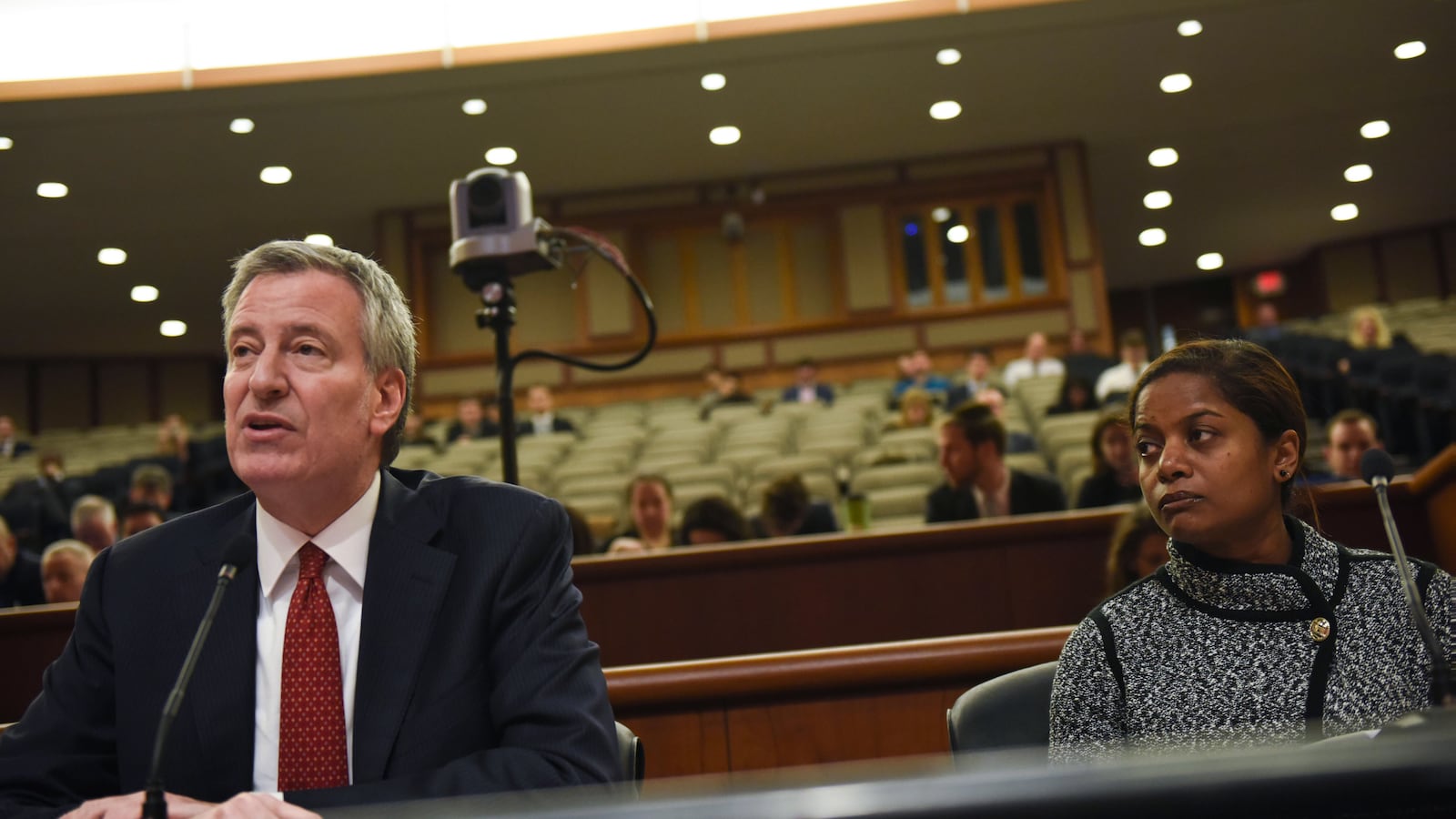A low-performing Brooklyn high school slated for closure is getting a new lease on life.
Mayor Bill de Blasio said Monday that the city would give Brooklyn Collegiate: A College Board School a one-year reprieve, citing community pressure.
The small high school in the Brownsville neighborhood was among 14 schools that education department officials recently moved to close after this academic year. Along with eight other schools on the city’s chopping block, Brooklyn Collegiate is part of the mayor’s Renewal program, which attempts to turn around struggling schools by investing extra resources in them and providing additional learning time. Officials also plan to combine another five Renewal schools that enroll very few students.
De Blasio was asked about the planned closure of Brooklyn Collegiate during a state legislative hearing Monday, where Sen. Roxanne J. Persaud noted students don’t have many options in the Brownsville and Ocean Hill area.
In response, de Blasio said city officials decided to put the closure on “pause” after meeting with concerned community members.
“Communities raised excellent points that we want to honor by adding a year and adding some additional investments, and seeing if we can get it to be sustainable on a long-term basis,” he said.
Parents and elected officials have also rallied to save other schools that landed on the city’s closure list, arguing that they were not given enough time to make improvements. The city has not announced any other changes to its closure or merger plans that have sparked a backlash.
Education department spokesman Michael Aciman said that Brooklyn Collegiate will receive coaching for teachers in Advanced Placement courses and “heightened supervision and guidance” from the local superintendent and district support offices.
Last year, only 63 percent of its students graduated — far below the citywide average of 74 percent, but higher than several other Renewal high schools that are not slated for closure. Over the last five years, its enrollment has steadily declined to just over 300 students, and 44 percent of students were chronically absent last year — meaning they missed 10 percent or more of the school year.

